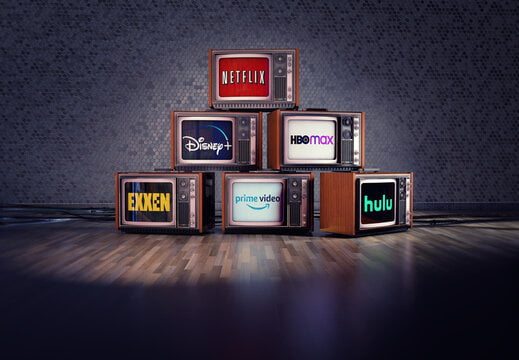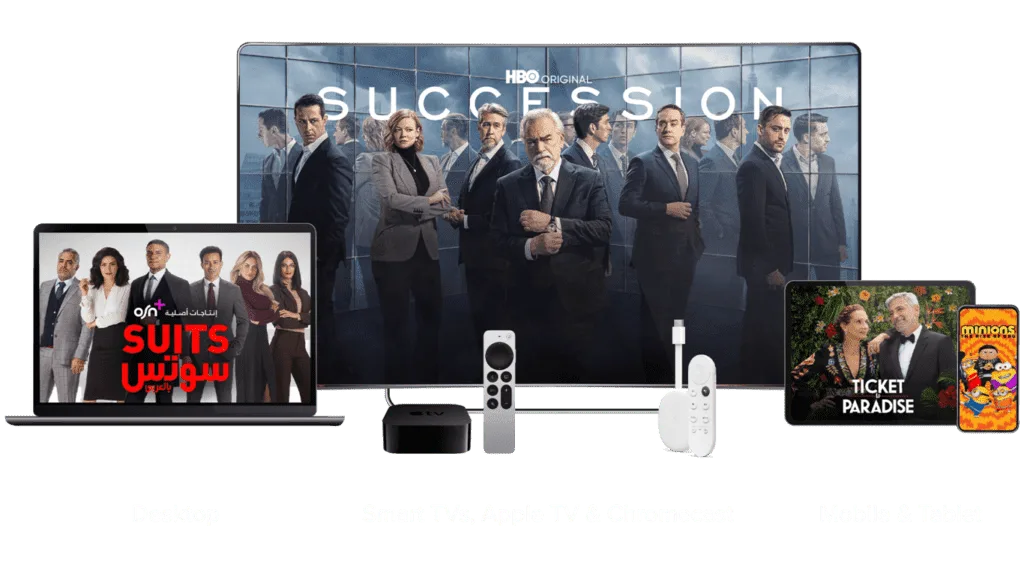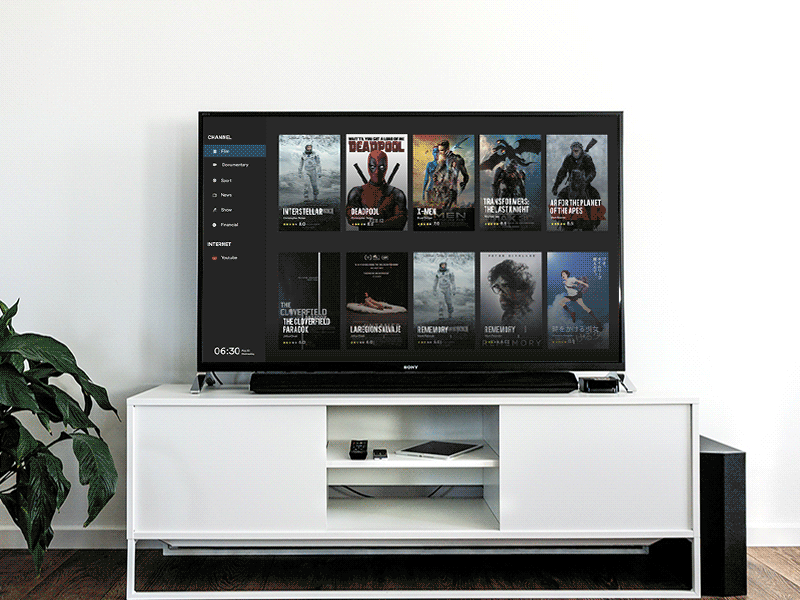Your basket is currently empty!
IPTV: How Does It Work ?
In the digital age, streaming services have revolutionized the way we consume media. One such service that has gained significant traction in recent years is IPTV, which stands for Internet Protocol Television. IPTV uses internet protocol (IP) networks to deliver television content and video services directly to the consumer’s device. In this article, we will explore the working of IPTV, its benefits, types, challenges, and its impact on the future of television.
What is IPTV ?

IPTV is a digital television service that utilizes internet protocol (IP) networks to deliver TV programs, video content, and on-demand services to viewers. Unlike traditional broadcast television, which relies on terrestrial signals, cable, or satellite networks, IPTV streams content over a high-speed internet connection. This allows for a more flexible, personalized, and interactive viewing experience.
How Does IPTV Work ?
IPTV operates on the principle of streaming media content over an IP-based network. Here’s how it works:
1. Content Source and Aggregation:
- Content Source: IPTV providers partner with content creators such as television networks, production houses, and independent creators to acquire the rights to broadcast TV shows, movies, sports, news, and other video content.
- Content Aggregation: The content is gathered and stored in central servers by the IPTV provider. These servers can host vast amounts of content, allowing viewers access to a wide range of programming.
2. Encoding and Compression:
- Encoding: Once the content is aggregated, it is encoded into a digital format suitable for streaming over the internet. Common encoding formats include H.264 and HEVC (H.265).
- Compression: The encoded content is compressed to reduce its file size while maintaining acceptable quality. Compression is essential for smooth streaming, as it minimizes bandwidth usage.
3. Content Delivery:
- IP Network: The encoded and compressed content is streamed over an IP network, such as the internet, to the viewer’s device. IPTV can be delivered over various networks, including fiber optic, DSL, cable, and wireless connections.
- Multicast and Unicast: IPTV streams can be delivered using two primary methods:
- Multicast: This method is efficient for delivering live broadcasts, as a single stream can be sent to multiple viewers simultaneously.
- Unicast: In unicast delivery, individual streams are sent to each viewer, allowing for on-demand services and personalized experiences.
- Multicast and Unicast: IPTV streams can be delivered using two primary methods:
4. Middleware and Set-Top Box:
- Middleware: Middleware acts as an interface between the user’s device and the IPTV server. It handles requests, manages content delivery, and provides features such as electronic program guides (EPGs), interactive TV, and more.
- Set-Top Box: A set-top box (STB) is often used to receive and decode the IPTV stream. The STB converts the digital signal into a format that can be displayed on a television or other compatible device.
5. User Experience:
- Interactive Features: IPTV offers interactive features such as pause, rewind, fast forward, and recording of live TV shows. Additionally, it provides access to on-demand content, personalized recommendations, and interactive applications.
- Multi-Screen Viewing: IPTV allows users to access content on various devices, such as smart TVs, tablets, smartphones, and laptops. This flexibility enhances the viewing experience.
Types of best iptv Services

There are several types of IPTV services available, each catering to different needs and preferences:
1. Live Television:
- best iptv service get Live TV streams real-time broadcasts of television channels. Users can access their favorite channels as they air, including news, sports, and entertainment.
2. Video on Demand (VoD):
- VoD allows users to choose and watch video content whenever they want. It includes movies, TV shows, and other pre-recorded content.
3. Time-Shifted TV:
- Time-shifted TV enables users to pause, rewind, or fast forward live television broadcasts. It also includes catch-up TV, which lets users watch past episodes of shows they may have missed.
4. Interactive TV:
- Interactive TV includes features such as voting, polls, quizzes, and interactive advertising. It enhances viewer engagement and participation.
Benefits of IPTV
IPTV offers several advantages over traditional television & best iptv service :
1. High-Quality Video:
- IPTV provides high-definition (HD) and even ultra-high-definition (4K) video quality, offering a superior viewing experience.
2. Personalization:
- best iptv can tailor content recommendations based on users’ viewing habits and preferences, making the experience more personalized.
3. On-Demand Content:
- best iptv service Users can access a vast library of on-demand content, allowing them to watch what they want, when they want.
4. Interactive Features:
- Interactive features such as pause, rewind, and fast forward give users more control over their viewing experience.
5. Multi-Screen Access:
- IPTV can be accessed on multiple devices, providing flexibility and convenience to users.
Challenges and Considerations
While best iptv has many benefits, there are also challenges and considerations that need to be addressed:
1. Bandwidth Requirements:
- IPTV requires a stable and high-speed internet connection for smooth streaming. In areas with limited internet infrastructure, this can be a challenge.
2. Content Licensing:
- IPTV providers must secure the necessary licenses to stream content legally. Licensing negotiations can be complex and costly.
3. Security and Privacy:
- Ensuring the security of user data and protecting content from piracy are important challenges for IPTV providers.
4. Quality of Service:
- Delivering consistent quality of service across different networks and devices can be difficult due to varying internet speeds and capabilities.
The Future of IPTV

IPTV is poised for significant growth in the coming years, driven by advances in technology and changing consumer preferences. Here are some trends that may shape the future of IPTV:
1. 5G and Improved Internet Infrastructure:
- The rollout of 5G networks and improvements in internet infrastructure will enable faster and more reliable IPTV streaming, even in remote areas.
2. Integration with Smart Home Devices:
- IPTV may integrate with smart home devices to provide a seamless and interconnected entertainment experience.
3. Enhanced Interactivity and Personalization:
- Future IPTV services may offer more advanced interactive features, such as augmented reality (AR) and virtual reality (VR), as well as even more personalized content recommendations.
4. Competitive Landscape:
- As more players enter the IPTV market, competition may drive innovation and lead to more affordable and diverse service offerings.
5. Expansion of VoD and Original Content:
- IPTV providers may expand their VoD libraries and invest in producing original content to attract and retain subscribers.
Conclusion
IPTV represents a significant evolution in the way we consume television and video content. By leveraging the power of internet protocol networks, iptv providers a flexible, interactive, and personalized viewing experience. While there are challenges to overcome, such as bandwidth requirements and content licensing, the future of IPTV looks promising. With advances in technology and changing consumer demands, IPTV is likely to play a major role in shaping the future of entertainment.
buy iptv and get access to over 24.500 Live TV Channels + VOD that works on all of your favorite devices.
One response to “IPTV how does it work ?”
[…] in the world of digital entertainment. Unlike traditional cable or satellite services, IPTV uses the internet to deliver a wide array of content, giving viewers more flexibility and control […]

















Leave a Reply